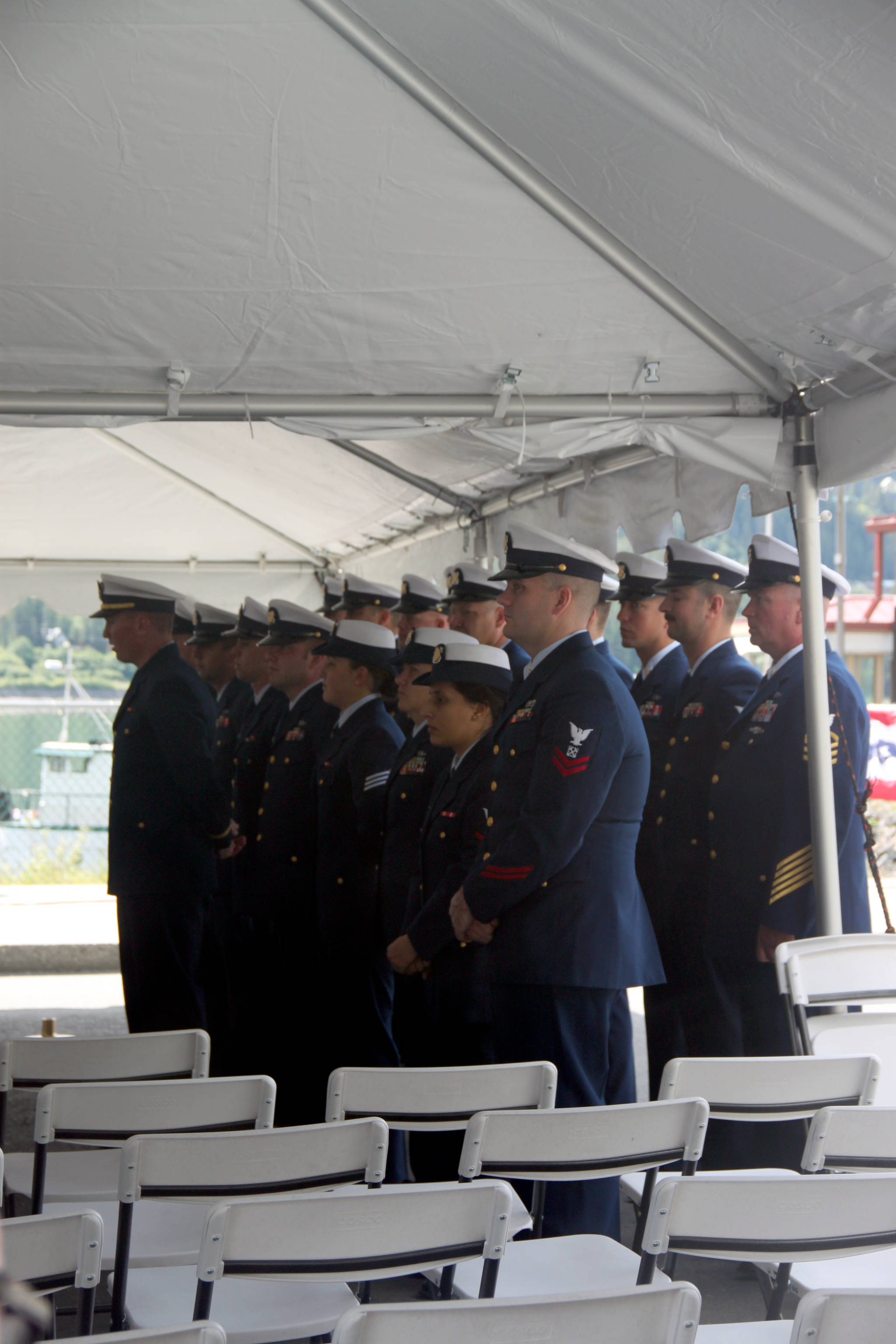Following its commissioning ceremony Wednesday, Alaska’s newest Coast Guard fast-response cutter, Bailey Barco, made its way to its home port of Ketchikan Saturday morning.
For Lt. Frank Reed, commanding officer of the Bailey Barco, this marks the beginning of his first command of a ship in Alaskan waters.
“I’m very excited,” Reed said.
His ship will be working primarily in fisheries law enforcement and search and rescue.
“Those are two of the core missions of the coast guard so we’re ready to ‘turn to,’ as we say,” Reed said.
Prior to becoming captain of the Bailey Barco, Reed spent four years as the technical director for the shipyard that built these ships. During this time, he oversaw design, construction and testing of this class of coast guard cutters as they were built.
“I have a very close relationship to these ships,” Reed said. “It’s pretty surreal but amazing. I’m savoring every minute of it.”
This class of cutter replaces the Coast Guard’s previous class of 110-foot island ships. These ships were commissioned in the mid-1980s and originally intended for only 15 years of service. Thirty years later they are finally being replaced, said Vice Adm. Fred Midgette, commander of the Coast Guard Pacific area.
While the missions have not changed, the ships are far more capable.
“It can go out in bigger seas, higher winds and continue to do its missions,” said Rear Adm. Michael McAllister, commander of the 17th Coast Guard district, which includes Alaska.
“If you just look at their range, they’re about 30 percent greater range than the ships they’re replacing,” Midgette said.
They also provide the crew more living space.
“One of the things that wears down a crew while they’re at sea is the constant fight against the ocean, so if the crew’s a little bit more comfortable it actually turns into better work for them, you get a little bit more out of them,” Midgette said. “These ships are big game changers for us.”
At the end of an extensive modernization process, Alaska will be equipped with six of these new ships. Currently the first two home port in Ketchikan. Four more ships of the same type will join them in Alaskan waters. Their home port locations are still in discussion, according to McAllister.
In addition to the six fast-response cutters, Alaska will receive two offshore patrol cutters, which are larger, 360-foot, 4,000-ton deep water patrol vessels.
“They’ll do the full range of Coast Guard missions,” Midgette said. “These (smaller cutters) are a little too small to go out into the Bering Sea, but these patrol ships will be able to. They’re big, capable ships. They can carry a helicopter on board. So they’ll be doing missions out in the Bering Sea and up in the Arctic Ocean.”
For now the Bailey Barco will join Alaska’s first new fast-response cutter, John McCormick, in Ketchikan.
“I’m looking forward to protecting the fisheries, getting out and seeing the beautiful Alaskan waters and interacting with the maritime community here,” Reed said. “We have a long history, and we want to continue that that tradition.”
• Erin Granger is an intern for the Juneau Empire. Contact her at eringranger93@gmail.com.

